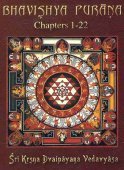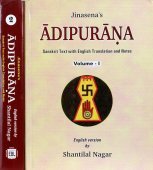Samba, Śamba, Śāmba, Sāmba, Śambā, Shamba: 19 definitions
Introduction:
Samba means something in Hinduism, Sanskrit, Jainism, Prakrit, Marathi, biology. If you want to know the exact meaning, history, etymology or English translation of this term then check out the descriptions on this page. Add your comment or reference to a book if you want to contribute to this summary article.
The Sanskrit terms Śamba and Śāmba and Śambā can be transliterated into English as Samba or Shamba, using the IAST transliteration scheme (?).
Images (photo gallery)
In Hinduism
Purana and Itihasa (epic history)
Source: archive.org: Puranic Encyclopedia1) Sāmba (साम्ब).—The son born to Śrī Kṛṣṇa by his wife Jāṃbavatī. Birth. A story about the birth of Sāmba, occurs in Devī Bhāgavata, Skandha 4, as follows: (See full article at Story of Sāmba from the Puranic encyclopaedia by Vettam Mani)
2) Sāmba (साम्ब).—A Brahmin scholar. When Dhṛtarāṣṭra started for the forest towards the close of his life, the people bade him farewell. This Brahmin stood among the people and spoke words of consolation. (Mahābhārata Āśramavāsika Parva, Chapter 10, Verse 13).
Source: Cologne Digital Sanskrit Dictionaries: The Purana Index1) Śamba (शम्ब).—A Dānava with manuṣya dharma.*
- * Vāyu-purāṇa 68. 15.
2a) Śāmba (शाम्ब).—A Saimhikeya.*
- * Vāyu-purāṇa 68. 18.
2b) A son of Āpa.*
- * Matsya-purāṇa 5. 22.
3a) Sāmba (साम्ब).—A son of Kṛṣṇa and Jāmbavatī; reincarnation of Guha;1 attended Aniruddha's marriage at Bhojakaṭa, went with the Vṛṣṇi army to Bāṇa's city and fought with the son of Bāṇa;2 went out to play and saw a huge lizard in a well and reported it to Kṛṣṇa;3 took Lakṣmaṇā, daughter of Duryodhana in a svayamvara. The Kurus imprisoned him. Afraid of Balarāma's prowess, was released by Duryodhana and was given dowry. Went to Dvārakā after the Rājasūya of Yudhiṣṭhira and defended the city against Śālva.4 Went to Syamantapañcaka for the solar eclipse.5 Went with Kṛṣṇa's sacrificial horse. Fought with Pradyumna at Prabhāsa.6 Disguised as a pregnant lady by Yadu youths for fun, approached a sage and asked him whether she would deliver a male child. In anger the sage said that she would give birth to a musala (iron rod) which would be death to the Yadu kula. Divested of his attire, the musala was seen; causing distress to the Yadus. The king ordered that it must be powdered and thrown into the deep. A bit that was left unpowdered was swallowed by a fish which was caught by a fisherman. The latter fixed it at the tip of his arrow. The particles of the musala were thrown ashore and grew to be eraka grass.7 Adopted by Gaṇḍūṣa; had five sons, all warriors, through Kāśī; one of the five vaṃśavīras;8 married Kaśyā, daughter of Supārśva, and mother of Pañcavīras and a number of sons, all with divine sparks;9 was looked upon with love by the 16000 women of Kṛṣṇa and hence they were cursed by Kṛṣṇa to be robbed and dishonoured by robbers. They were rid of the curse by observing anaṅgadāna vrata as prescribed by Dālbhya, the sage.10 Got killed in the Yādava struggle at Prabhāsa.11
- 1) Bhāgavata-purāṇa I. 10. 29; 11. 17; 14. 31; III. 1. 30; X. 61. 11; Matsya-purāṇa 46. 27; 47. 18; Viṣṇu-purāṇa IV. 15. 37; V. 32. 2;
- 2) Bhāgavata-purāṇa X. 61. 26; 63. 3;
- 3) 64. 1-4;
- 4) Ib X 68. 1-12, 43-52; 75. 29; 76. 14; 77. 4. Viṣṇu-purāṇa V. 35. 4-5.
- 5) Bhāgavata-purāṇa X. 82. 6.
- 6) Ib X. 89. 22 [2]: 90. 33; XI. 30. 16.
- 7) Ib XI. 1. 13-23; Viṣṇu-purāṇa V. 37. 7-10.
- 8) Brahmāṇḍa-purāṇa III. 71. 191 and 260; 72 1.
- 9) Matsya-purāṇa 47. 24.
- 10) Ib 70. 5-10, 17-19, 62.
- 11) Viṣṇu-purāṇa V. 37. 46.
3b) A son of Tarasvin.*
- * Vāyu-purāṇa 96. 252.
3c) A vaṃśavīra.*
- * Vāyu-purāṇa 97. 1.
3d) The upapurāṇa containing legends connected with Sāmba.*
- * Matsya-purāṇa 53. 62.
Sāmba (साम्ब) is a name mentioned in the Mahābhārata (cf. I.177.16) and represents one of the many proper names used for people and places. Note: The Mahābhārata (mentioning Sāmba) is a Sanskrit epic poem consisting of 100,000 ślokas (metrical verses) and is over 2000 years old.
Source: Shodhganga: Elements of Art and Architecture in the Trtiyakhanda of the Visnudharmottarapurana1) Sāmba (साम्ब) or Sāmbapurāṇa refers to one of the eighteen Minor Puranas (i.e., Upapurāṇa) according to the Kūrmapurāṇa and other traditional lists of Puranic literature: a category of ancient Sanskrit texts which gives a huge contribution in the development of Indian literature.—The Upapurāṇas (e.g., sāmba-purāṇa) can be considered as the supplements of the Mahāpurāṇas as those are mostly based on the Mahāpurāṇas. The Saurapurāṇa considers the Upapurāṇas as khilas i.e., supplements. [...] Though the numbers of Upapurāṇas are specified as eighteen, there are many important Upapurāṇas which are excluded from the lists of Upapurāṇas given by different sources.
2) Śāmba (शाम्ब) refers to another one of the eighteen Minor Puranas (i.e., Upapurāṇa) according to the Devībhāgavatapurāṇa.

The Purana (पुराण, purāṇas) refers to Sanskrit literature preserving ancient India’s vast cultural history, including historical legends, religious ceremonies, various arts and sciences. The eighteen mahapuranas total over 400,000 shlokas (metrical couplets) and date to at least several centuries BCE.
General definition (in Hinduism)
Source: WikiPedia: HinduismSamba (संब): A Yadava youngster dressed as a woman who gave birth to a mace, as foretold by rishis.
In Jainism
General definition (in Jainism)
Source: archive.org: TrisastisalakapurusacaritraŚambā (शम्बा) refers to the “second ploughing”, according to chapter 3.1 [sambhava-jina-caritra] of Hemacandra’s 11th century Triṣaṣṭiśalākāpuruṣacaritra: an ancient Sanskrit epic poem narrating the history and legends of sixty-three illustrious persons in Jainism.
Accordingly: “At daybreak King Jitāri held a great birth-festival in honor of the Arhat deserving the world, who had become his son. In every house, on every road, in every market, in the whole city a festival took place just as in the palace. While he was in embryo, rice was grown (sambhūta); and at that time the second ploughing (śambā) took place; so his father gave the name ‘Sambhava’ and also ‘Śambhava’ to the Lord”.

Jainism is an Indian religion of Dharma whose doctrine revolves around harmlessness (ahimsa) towards every living being. The two major branches (Digambara and Svetambara) of Jainism stimulate self-control (or, shramana, ‘self-reliance’) and spiritual development through a path of peace for the soul to progess to the ultimate goal.
Biology (plants and animals)
Source: Google Books: CRC World Dictionary (Regional names)Samba in Ivory Coast is the name of a plant defined with Triplochiton scleroxylon in various botanical sources. This page contains potential references in Ayurveda, modern medicine, and other folk traditions or local practices It has the synonym Samba scleroxylon (K. Schum.) Roberty.

This sections includes definitions from the five kingdoms of living things: Animals, Plants, Fungi, Protists and Monera. It will include both the official binomial nomenclature (scientific names usually in Latin) as well as regional spellings and variants.
Languages of India and abroad
Marathi-English dictionary
Source: DDSA: The Molesworth Marathi and English Dictionarysāmba (सांब).—m (S sa & ambā. That has ambā or Parvati.) A name of Mahadeva or Shiva. 2 fig. A term for a soft, simple, unsuspecting person.
Source: DDSA: The Aryabhusan school dictionary, Marathi-Englishsāmba (सांब).—m A name of śiva. Fig. A term for a simple person.
Marathi is an Indo-European language having over 70 million native speakers people in (predominantly) Maharashtra India. Marathi, like many other Indo-Aryan languages, evolved from early forms of Prakrit, which itself is a subset of Sanskrit, one of the most ancient languages of the world.
Sanskrit dictionary
Source: DDSA: The practical Sanskrit-English dictionaryŚamba (शम्ब).—a. [śamb-ac]
1) Happy, fortunate.
2) Poor, unfortunate. -म्बः (mbaḥ), (-mbhaḥ) 1 The thunderbolt of Indra.
2) The iron head of a pestle.
3) An iron chain worn round the loins.
4) Ploughing 'with the grain' or in the regular direction.
5) The second ploughing of a field.
6) A particular measure of length. (śambākakṛ means 'to plough twice'; tvayā śambākṛtaṃ kṣatam N.2.83, doubly pierced).
See also (synonyms): śambha.
--- OR ---
Śāmba (शाम्ब).—Name of a son of Kṛṣṇa and Jāmbavatī.
Derivable forms: śāmbaḥ (शाम्बः).
--- OR ---
Saṃba (संब).—
1) The second ploughing of a field; (saṃvākṛ to plough twice); see शंब (śaṃba) also.
2) Water.
Derivable forms: saṃbam (संबम्).
--- OR ---
Sāmba (साम्ब).—Name of Śiva.
Derivable forms: sāmbaḥ (साम्बः).
Source: Cologne Digital Sanskrit Dictionaries: Shabda-Sagara Sanskrit-English DictionaryŚamba (शम्ब).—mfn.
(-mbaḥ-mbā-mbaṃ) 1. Happy, fortunate. 2. Poor, indigent. m.
(-mbaḥ) 1. Indra'S thunderbolt. 2. The iron head of a pestle. 3. An iron chain worn round the loins. 4. The second ploughing of a field. E. śam happiness, and ba possessive aff.; or śamb to accumulate, aff. ac; it is also read sava, śaṃva, and samba .
--- OR ---
Samba (सम्ब).—n.
(-mbaṃ) 1. Water. 2. The second ploughing of a field. E. samb to go, aff. ac .
Source: Cologne Digital Sanskrit Dictionaries: Cappeller Sanskrit-English DictionaryŚamba (शम्ब).—[masculine] a cert. weapon of Indra.
--- OR ---
Sāmba (साम्ब).—[masculine] [Name] of a son of Kṛṣṇa.
Source: Cologne Digital Sanskrit Dictionaries: Aufrecht Catalogus Catalogorum1) Śāmba (शाम्ब) as mentioned in Aufrecht’s Catalogus Catalogorum:—See Sāmba.
2) Sāmba (साम्ब):—Sāmbapañcāśikā. Sūryadvadaśāryā. Sūryasaptāryā.
Source: Cologne Digital Sanskrit Dictionaries: Monier-Williams Sanskrit-English Dictionary1) Śamba (शम्ब):—m. (derivation doubtful) a weapon used by Indra ([according to] to some ‘Indra’s thunderbolt’, but cf. śambin), [Ṛg-veda x, 42, 7] (= vajra, [Naighaṇṭuka, commented on by Yāska iv, 2])
2) the iron head of a pestle, [cf. Lexicographers, esp. such as amarasiṃha, halāyudha, hemacandra, etc.]
3) an iron chain worn round the loins, [Horace H. Wilson]
4) a [particular] measure of length, [cf. Lexicographers, esp. such as amarasiṃha, halāyudha, hemacandra, etc.]
5) ploughing in the regular direction (= anuloma-karṣaṇa), [cf. Lexicographers, esp. such as amarasiṃha, halāyudha, hemacandra, etc.]
6) the second ploughing of a field, [Horace H. Wilson]
7) Name of an Asura (cf. śambara), [Taittirīya-brāhmaṇa [Scholiast or Commentator]]
8) mfn. happy, fortunate, [cf. Lexicographers, esp. such as amarasiṃha, halāyudha, hemacandra, etc.] (cf. śaṃ-vat, p. 1054, col. 2)
9) poor (?), [cf. Lexicographers, esp. such as amarasiṃha, halāyudha, hemacandra, etc.]
10) Śāmba (शाम्ब):—m. Name of a king, [Daśakumāra-carita] (also [wrong reading] for sāmba, q.v.)
11) Sāmba (साम्ब):—1. sāmba m. (also written śāmba) Name of a son of Kṛṣṇa and Jāmbavatī (in consequence of the curse of some holy sages who had been deceived by a female disguise which he had assumed, he was condemned to produce offspring in the shape of a terrific iron club for the destruction of the race of Vṛṣṇi and Andhaka; he is said to have been instructed by Nārada in the worship of the sun, and by Vyāsa in the ritual of the Magi), [Mahābhārata; Harivaṃśa; Purāṇa]
12) (also with śāstrin) Name of various authors and teachers, [Catalogue(s)]
13) n. = -purāṇa, [ib.]
14) 2. sāmba mfn. attended by Ambā (q.v.), [Kāśī khaṇḍa, from the skanda-purāṇa]
Source: Cologne Digital Sanskrit Dictionaries: Yates Sanskrit-English Dictionary1) Śamba (शम्ब):—śambati 1. a. To go. (ka) śambayati 10. a. To accumulate.
2) (mbaḥ) 1. m. Indra's thunderbolt; iron head of a pestle; chain round the loins; second ploughing. a. Happy.
3) Ṣamba (षम्ब):—sambati 1. a. To go. sambhayati 10. a. To assemble, unite.
4) Samba (सम्ब):—sambati 1. a. To go. (kaḥ) sambayati 10. a. To unite, join.
5) (mbaṃ) 1. n. Water; twice ploughing.
6) Sāmba (साम्ब):—(ka) sāmbayati 10. a. To join, assemble.
Source: DDSA: Paia-sadda-mahannavo; a comprehensive Prakrit Hindi dictionary (S)Śāmba (शाम्ब) in the Sanskrit language is related to the Prakrit word: Saṃba.
[Sanskrit to German]
Sanskrit, also spelled संस्कृतम् (saṃskṛtam), is an ancient language of India commonly seen as the grandmother of the Indo-European language family (even English!). Closely allied with Prakrit and Pali, Sanskrit is more exhaustive in both grammar and terms and has the most extensive collection of literature in the world, greatly surpassing its sister-languages Greek and Latin.
Prakrit-English dictionary
Source: DDSA: Paia-sadda-mahannavo; a comprehensive Prakrit Hindi dictionary1) Saṃba (संब) in the Prakrit language is related to the Sanskrit word: Śāmba.
2) Saṃba (संब) also relates to the Sanskrit word: Śamba.
Prakrit is an ancient language closely associated with both Pali and Sanskrit. Jain literature is often composed in this language or sub-dialects, such as the Agamas and their commentaries which are written in Ardhamagadhi and Maharashtri Prakrit. The earliest extant texts can be dated to as early as the 4th century BCE although core portions might be older.
Kannada-English dictionary
Source: Alar: Kannada-English corpusŚaṃba (ಶಂಬ):—
1) [noun] the thunderbolt, Indra's weapon.
2) [noun] a large water-vessel; a shape.
--- OR ---
Sāṃba (ಸಾಂಬ):—
1) [noun] a man disinclined to work or physical exertion; a lazy, indolent man.
2) [noun] a stupid fellow; a blockhead.
--- OR ---
Sāṃba (ಸಾಂಬ):—
1) [noun] Śiva (who is associated with Amba, i.e. Pārvati).
2) [noun] one of the eighteen minor Purāṇas.
Kannada is a Dravidian language (as opposed to the Indo-European language family) mainly spoken in the southwestern region of India.
See also (Relevant definitions)
Starts with (+18): Campa, Samba bhatta, Samba shastrin, Sambacarita, Sambada, Sambaddh, Sambaddha, Sambaddhabaddhavak, Sambaddhadarpa, Sambaddham, Sambaddhanta, Sambaddhartha, Sambaddhasainyaugha, Sambaddhavak, Sambadh, Sambadha, Sambadhaka, Sambadhana, Sambadhani, Sambadhatandri.
Query error!
Full-text (+258): Campa, Shambakrita, Sambavati, Shambakri, Sambaditya, Shambapani, Sambapurana, Sambashiva, Sambavijaya, Sambacarita, Sambapancashika, Sambeshvara, Sambapura, Samva, Sambopapurana, Shambamani, Campam, Shrija, Samba shastrin, Sambamurti.
Relevant text
Search found 72 books and stories containing Samba, Śamba, Śāmba, Sāmba, Saṃba, Ṣamba, Sāṃba, Śambā, Śaṃba, Shamba; (plurals include: Sambas, Śambas, Śāmbas, Sāmbas, Saṃbas, Ṣambas, Sāṃbas, Śambās, Śaṃbas, Shambas). You can also click to the full overview containing English textual excerpts. Below are direct links for the most relevant articles:
The Sun-Worshipping Sakadvipiya Brahmanas (by Martina Palladino)
1. Sanskrit text < [Chapter 1 - The Purāṇic Sections]
Introduction (the Sāmba-purāṇa and Bhaviṣya-purāṇa) < [Chapter 1 - The Purāṇic Sections]
3. The Iconography of the Sun God < [Chapter 2 - Some Reflections on Topics Presented in the Purāṇas]
Garga Samhita (English) (by Danavir Goswami)
Verse 4.12.2 < [Chapter 12 - The Story of the Gopīs That In the Holi Festival Displayed Three Transcendental Virtues]
Verse 1.18.6 < [Chapter 18 - Vision of the Universal Form]
Verse 6.19.17 < [Chapter 19 - In the First Fortress of Dvārakā, the Glories of Līlā-sarovara, etc.]
Vishnu Purana (by Horace Hayman Wilson)
Chapter XXXV - Wedding of Samba, the son of Krishna < [Book V]
The Upa-purāṇas < [Preface]
Chapter XXXII - Description of Usha the daughter of Bana < [Book V]
Linga Purana (by J. L. Shastri)
Chapter 108 - Glory of the Pāśupata-Vrata < [Section 1 - Uttarabhāga]
Chapter 69 - Śrīkṛṣṇa, his birth and life (somavaṃśa-anukīrtana) < [Section 1 - Uttarabhāga]
Chapter 65 - Thousand names of Śiva (Rudra-sahasranāma) < [Section 1 - Uttarabhāga]
Studies in the Upapuranas (by R. C. Hazra)
Chapter 1 - The Upapurana literature—its extent, antiquity and origin
Chapter 2.1 - The Samba-purana (study)
Three Ancient Famous Temples of the Sun < [Purana, Volume 8, Part 1 (1966)]
The Puranic Records on the Sun-worship < [Purana, Volume 11, Part 2 (1969)]
The Quotations of the Puranas in the Danasagar < [Purana, Volume 7, Part 1 (1965)]
Related products


